Recent Fire Damage Posts
Unveiling the Lingering Menace of Smoke Damage
8/15/2023 (Permalink)
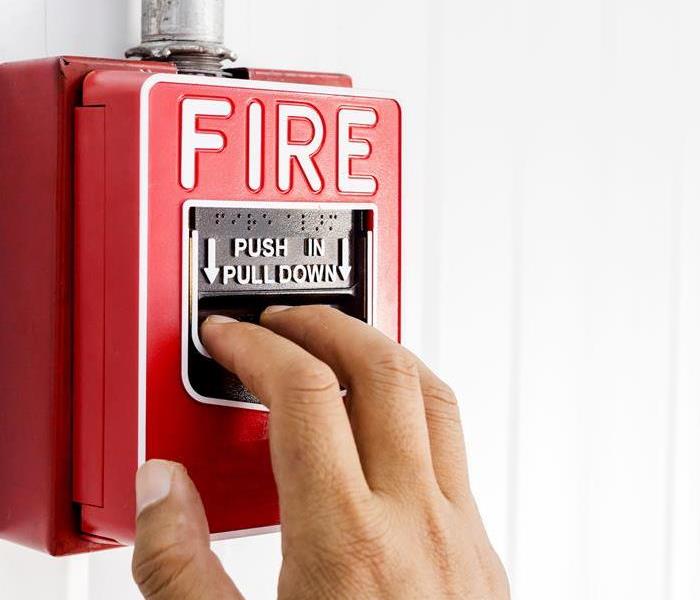 Smoke and fire damage can leave unfortunate structural integrity of your building.
Smoke and fire damage can leave unfortunate structural integrity of your building.
A fire can be a devastating event, causing immense destruction and leaving behind a trail of chaos. While the flames may be the most obvious culprit, there is another silent intruder that can wreak havoc long after the fire has been extinguished: smoke. Smoke damage is often underestimated, yet it can pose serious risks to both the structural integrity and the health of your building's occupants. In this article, we'll explore the hidden dangers of smoke damage and provide insights into its mitigation and restoration.
The Scope of Smoke Damage
When a fire occurs, smoke particles and chemical substances are released into the air. Smoke can quickly infiltrate every nook and cranny of a building, leaving behind a residue that can cause significant damage. The extent of smoke damage depends on various factors, including the size of the fire, the materials burned, and the duration of exposure.
Structural Impacts
- Discoloration and Staining: Smoke particles can settle on surfaces, causing discoloration and staining of walls, ceilings, furniture, and other belongings. Over time, these stains can become more stubborn and difficult to remove.
- Odor: The pungent odor of smoke can linger long after a fire. It can permeate porous materials such as carpets, curtains, upholstery, and even building materials like drywall. This persistent smell can be unpleasant and hard to eliminate without proper remediation.
- Corrosion: Smoke contains corrosive substances that can damage metal surfaces, electrical systems, and appliances. If left untreated, this corrosion can compromise the functionality and safety of these components.
Mitigation and Restoration
After a fire, it's crucial to engage a professional restoration company experienced in smoke damage remediation. They will conduct a thorough assessment to identify the extent of the damage and develop an appropriate plan of action. Professional technicians will employ specialized techniques and equipment to clean surfaces, remove soot and residue, and eliminate odors. This may include dry cleaning, wet cleaning, air scrubbing, and the use of ozone generators or thermal fogging.
Smoke can infiltrate the building's HVAC system, spreading contaminants throughout the structure. A thorough inspection and cleaning of the system are necessary to ensure the removal of any smoke particles and to prevent further circulation of pollutants. In severe cases, damaged materials, such as insulation, drywall, or carpets, may need to be removed and replaced. This step is crucial to eliminate any hidden smoke residues and restore the integrity of the building.
Prevention and Preparedness
Ensure that your building is equipped with functioning smoke detectors on every floor and in each room. Regularly test and maintain these devices to guarantee their effectiveness. Create an emergency evacuation plan and educate occupants about fire safety procedures. Conduct regular drills to ensure everyone is familiar with the evacuation routes and knows how to respond in case of a fire. Implement fire-safe practices such as proper storage of flammable materials, regular maintenance of electrical systems, and safe usage of heating appliances.
Smoke damage is a formidable foe that can silently compromise the structural integrity of your building. Remember, when it comes to smoke damage, swift action and expert assistance are key to restoring your building to its pre-fire condition and ensuring a safe environment for all.
Clearing the Air: The Importance of Professional Smoke Odor Cleanup
4/12/2023 (Permalink)
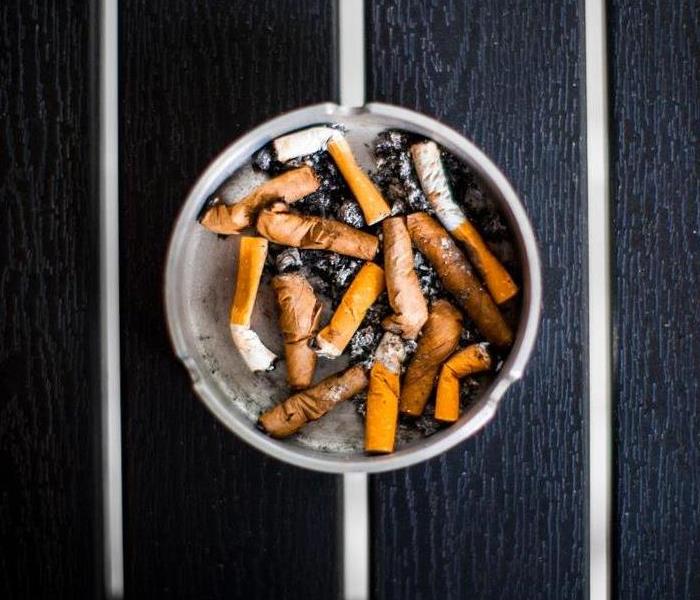 Smoke odor cleanup can be complex, hire a professional.
Smoke odor cleanup can be complex, hire a professional.
Fire damage can be devastating, whether it's a small kitchen fire or a large commercial blaze. The effects of fire damage are not limited to the structure itself but also include everything in its path: furniture, clothing, personal items and even family heirlooms. Fire damage restoration requires specialized cleaning methods to remove soot and smoke residue from every surface imaginable including walls, floors, ceiling tiles and more.
Fire damage restoration also involves removing water used for extinguishing the flames as well as any other sources of moisture that may have been introduced during cleanup efforts (such as rainwater). When combined with water damage from broken pipes or sprinkler systems during cleanup efforts--it becomes even more important for SERVPRO professionals to respond quickly with trained technicians who know how best to handle these situations safely while minimizing further damage caused by exposure over time if left untreated properly before beginning any repairs needed afterwards.
Smoke Odor Cleanup Process
Smoke odor cleanup is a complex process that requires specialized equipment and techniques. At SERVPRO, our team of experts uses a variety of methods to remove smoke odor from your home or business. These methods include:
Thermal fogging
This involves using a special machine that creates a fog-like substance that penetrates every surface and crevice in your home or business. The fog contains deodorizing agents that neutralize the smoke odor at the molecular level.
Ozone treatment
This involves using a machine that generates ozone gas, which reacts with the smoke odor to neutralize it. This method is particularly effective for removing smoke odor from fabrics, upholstery, and other porous materials.
Air scrubbing
This involves using a machine that filters the air in your home or business to remove smoke particles and other contaminants. This method is particularly effective for removing smoke odor from the air.
Surface cleaning
This involves using specialized cleaning products and techniques to clean every surface in your home or business. This method is particularly effective for removing smoke residue that can contribute to smoke odor.
Importance of Professional Smoke Odor Cleanup
It's important to hire a professional smoke odor cleanup company like SERVPRO to handle smoke odor removal for several reasons:
Property damage: Smoke particles can cause significant damage to your property, including discoloration and corrosion. Professional smoke odor cleanup can help prevent further damage and restore your property to its pre-fire condition.
Insurance coverage: If you have insurance coverage for smoke damage, it's important to hire a professional smoke odor cleanup company to ensure that your claim is processed properly.
Smoke odor cleanup is a complex process that requires specialized equipment and techniques. At SERVPRO, we have the expertise and experience to handle smoke odor removal in your home or business. If you've been affected by a fire or smoke damage, don't hesitate to contact us for a free quote on your restoration project. We're available 24/7 to respond to your emergency and provide the professional smoke odor cleanup services you need to get your life back to normal.
How Do Restoration Professionals Remediate Smoke Damage?
12/12/2022 (Permalink)
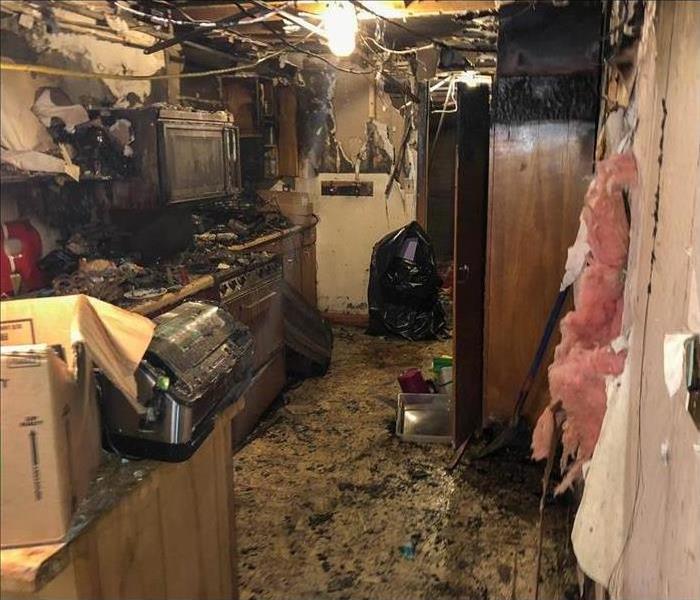 Home damaged by fire
Home damaged by fire
How Can Restoration Experts Repair Smoke Damage?
Fires are a stressful experience for anyone involved. The initial shock of a fire may lead you to make decisions that could cause further damage to your home or business. For example, if you try to remove smoke residue yourself, you may end up making an even bigger mess—and it could make the process of restoration more difficult for the professionals who come in afterward to clean up after the fire.
If someone asks me how I help people recover from fires, I like to use the analogy of a waiter taking food orders at a restaurant. The waiter takes his time with each table so he can get it right—he’s not going as fast as possible just because he has another table waiting! That’s what we do here at SERVPRO of Southern Blair and Bedford County; we take our time with each client so we can get it right and help them recover from their loss quickly."
The first step in these situations is protecting the contents of your home or business.
Smoke damage can be devastating to a structure and its contents. The goal is to prevent mold growth on your belongings, but this protection also helps keep out dust and debris that could otherwise fill up every nook and cranny as you breathe in contaminants through the air.
You should remove any sensitive items that can't be cleaned, such as artwork, books or products made from animal fur. If you don't have access to professional equipment for drying out any electronics, move them away from walls or other areas where smoke has collected. Cover carpets and floors with plastic sheets or tarps to contain moisture; ventilate the area by opening windows and doors until it feels dry (usually three days).
Next, the restoration team will remove any remaining soot and smoke residue.
Soot can be removed by hand with a vacuum or through the use of specialized equipment. Smoke residue is often removed with a machine that scrubs the surface clean to complete this step of the process. The amount of time it takes for a complete cleaning will vary depending on how much soot and smoke residue is present in your home or building.
Finally, restoration experts will repair and refinish any areas with smoke damage.
Additionally, restoration experts will repair and refinish any areas with smoke damage. If the damage is severe, they may need to replace the damaged items. If the damage is minor, they may be able to restore the item to its original condition.
Restoration experts can aid you in recovering after a fire.
When you need help recovering from a fire, SERVPRO of Southern Blair and Bedford County can be there for you. Our team of highly trained restoration professionals is ready to respond with emergency services and cleanup. We are experts at managing the damage caused by smoke, soot and odor following a fire.
SERVPRO of Southern Blair and Bedford County technicians also have years of experience working with insurance companies on behalf of our customers. We know how to prevent or minimize additional living expenses resulting from mold or water damage while repairing your home or business property. Our goal is always to make things right again as quickly as possible so that clients can get back to their lives in the least amount of time possible while restoring everything, they lost in the fire back to its original condition.
Conclusion
Smoke damage can be a difficult problem to remediate. That's why it's best to call in professionals who know what they're doing.
Keeping Your Pet Fire Safe
8/27/2022 (Permalink)
 Include your pet in your family emergency plan.
Include your pet in your family emergency plan.
Preparing Your Pet For Fire Emergency
Your pets are a part of your family, and as such, it’s only natural that you’d want to protect them in the event a fire occurs in your home. Unfortunately, many homeowners in Hollidaysburg, PA fail to include their dog, cat or other pet in their family fire emergency plan, leading to heartbreaking outcomes. However, by preparing your pet for fire emergencies early on, you can keep your furry friend safe from harm. These extra precautions are sometimes as simple as:
- Taking a few common fire prevention precautions
- Training your pet to respond to your voice
- Setting up a proper safe space for your pet while you’re away.
Reducing Fire Hazards
It’s estimated that unattended pets are responsible for almost 1,000 house fires annually. Ensure that you’re not leaving any open flames, such as candles, unattended, remove your stove’s knobs while you’re away so they can’t be turned by curious paws, and consider securing your pet in a safe place while you’re not around to supervise them.
Prepare for Disasters
If a fire does start on your lot, you and your pet both need to be prepared. First, ensure that you have fire emergency supplies such as food and medication for your pet on hand. Pet preparation can also be made just a bit easier if you take the time to teach your pet to come running when they hear you call their name.
When You’re Not Home
Fires happen when you least expect them, including when you’re not at home. That’s why you need to make it easy for rescue services to help your pet if this situation does arise. Keep your pet on a collar, keep a leash nearby and secure them somewhere near the door while you’re away. Furthermore, keep your vaccination and pet ownership records in a firebox.
Preparing your pet for a fire emergency can take a bit of time and patience, but in the end, it’s well worth it if it means keeping your companion safe.
6 Simple Steps to Use a Fire Extinguisher
7/19/2022 (Permalink)
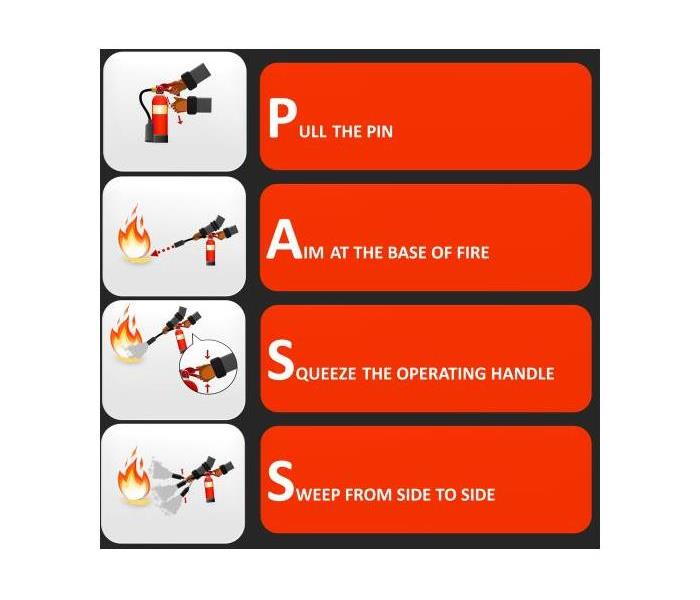 If your extinguisher class matches the fire's cause, use the P.A.S.S. method.
If your extinguisher class matches the fire's cause, use the P.A.S.S. method.
How to Use a Fire Extinguisher in Six Easy Steps
A fire extinguisher puts out flames quickly and efficiently. But many people don't know how to use this essential safety tool. If a fire occurs in your Hollidaysburg, PA, residence, follow these simple steps to successfully snuff it out with an extinguisher.
1. Sound the Alarm
Activate the fire alarm and call the fire department before you do anything else. Immediately exit the building and wait for professional firefighters to arrive if the fire damage or danger is too extensive. If it's safe for you to stay and extinguish the flames, first verify you will not be cut off from your escape route while you work.
2. Assess the Cause
Every extinguisher is labeled with a class based on the type of fire it can eliminate. Class A covers basic combustibles such as wood, rubber, or plastic. Class B covers flammable liquids. Class C ends electrical equipment and wiring fires. Multipurpose extinguishers cover A through C fires. Class K extinguishers are specifically designed to help with oil combustion common in a kitchen fire.
If your extinguisher class matches the fire's cause, use the P.A.S.S. method explained below. Otherwise, evacuate the site immediately.
3. Pull the Pin
Pull the pin located at the top of the extinguisher.
4. Aim the Fire Extinguisher Low
Direct the extinguisher's discharge nozzle at the base of the fire. Avoid touching the nozzle of CO2 extinguishers to prevent skin damage from dry ice.
5. Squeeze the Handle
Grasp the extinguisher handle to expel the fire retardant.
6. Sweep From Side to Side
Sweep the nozzle back and forth, remaining focused on the base of the fire, until the flames are completely out. Monitor the area to ensure the fire doesn't reignite. If the fire starts again, repeat steps three through six. After the emergency is resolved, a fire restoration company can help clean and restore your residence.
A fire extinguisher easily and effectively put out fires. By following the steps outlined above, you can put out a fire before it becomes a serious hazard.
3 Ways To Remove Smells From Your Microwave
4/13/2022 (Permalink)
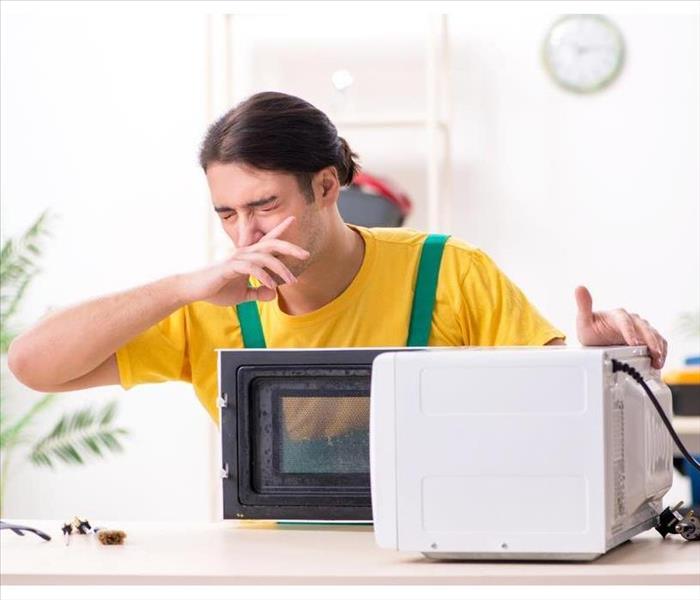 Get rid of smells in your microwave.
Get rid of smells in your microwave.
Three Ways to Get Rid of Smells in Your Microwave
If you're like most people, you probably use your microwave a lot. They are used by everyone, from those just learning to cook to master chefs. However, with use comes accidents that can leave a nasty smoke smell in your appliance. Fortunately, there are several DIY solutions that you can use to remove this odor from every crevice.
1. Vinegar and Baking Soda
You probably have these pantry staples in your home in Mount Union, PA create the toughest DIY solution for tackling a lingering smoke smell. To use this method, gather the vinegar, baking soda, and a clean sponge. Let the sponge saturate with vinegar and pour baking soda on it. Heat it inside the appliance for 20 seconds. When it is finished, use the sponge to clean the inside. Wipe this off with a soapy sponge and dry it with a towel.
2. Baking Soda
If you're fresh out of vinegar, you can use plain baking soda. Clean your appliance as normal and place an opened box of this cleaner inside. If you buy the big boxes, you may want to place a generous amount in a bowl and place inside. Let this sit overnight to fight smells.
3. Coffee
Coffee is another pantry staple that can remove your stubborn smoke smell. To use this option, put two tablespoons inside a mug and add water. Heat the solution for two minutes, stopping it if it starts to boil. Let it sit for a minute and repeat. Check the amount of water, add some if it is low, and repeat. Keep repeating the two minutes of heat and one minute of rest. When you have reached 10 minutes of heating, remove the cup. Often, this will remove the smell without any additional effort. If it doesn't, it may be time to call a fire restoration company to have them remove the odor.
This appliance is your kitchen's workhorse. To get inside the tightest spots, like the vent grill, you should use one of these DIY solutions. They can tackle even the worst smells.
How to Ensure the Efficiency of Your Fire Sprinklers
3/29/2022 (Permalink)
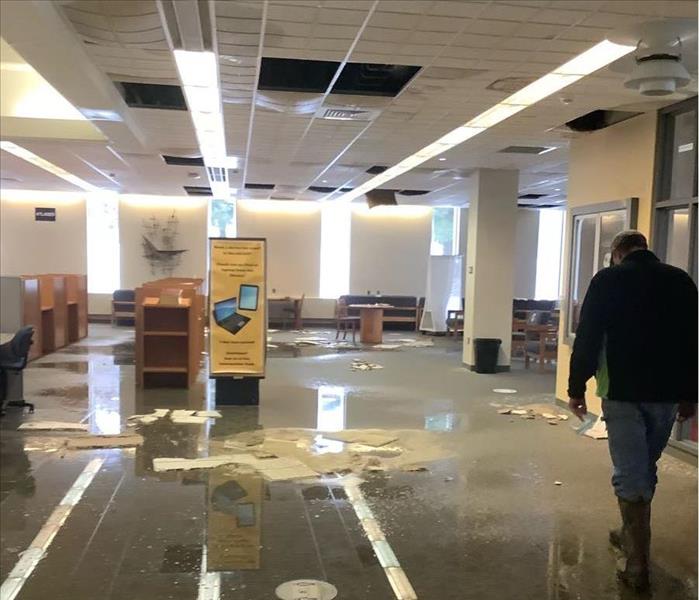 This library's sprinkler system extinguished a fire that started on the first floor. SERVPRO helped with the water damage mitigation afterward!
This library's sprinkler system extinguished a fire that started on the first floor. SERVPRO helped with the water damage mitigation afterward!
Dealing with a fire in your commercial building is a scary situation, but with the help of fire sprinklers, you can reduce the damage drastically. A fire sprinkler can release 8 to 24 gallons per minute, easily quenching growing fires. It’s important to maintain your fire sprinklers so that they can quickly react to the growing heat. Here are a couple things you can do to make sure that your sprinklers can effectively put out a fire.
Correct Installation
If you are putting in a fire sprinkler, be sure to install everything correctly. Each component must be working for the sprinklers to operate. Common types of sprinkler systems include:
- Dry Pipe. Pipes are filled with pressurized air or nitrogen.
- Wet Pipe. This system has water already inside of the pipes to ensure a quick response.
- Pre-Action. When heat or smoke is detected, the valve is activated to allow water to flow in the piping.
By knowing which sprinkler system you have, you can be aware of the situation in the case of a fire.
Maintain Your System
If there are obstructions in the piping or the main valve is turned off, your fire sprinkler will not turn on. Fire suppression is essential when protecting both the lives of your employees and the assets in your building, so regular maintenance is needed. Laws and codes in Blair or Bedford County, PA often require frequent check-ups to help with insurance policies and public safety.
There are many reasons why keeping your sprinkler system in top shape is vital. This handy system can quench a fire even before the fire department reaches the building, thus minimizing damage. Also, fire sprinkler cleanup is much less severe than fire hose cleanup because not as many gallons of water per minute are used. By inspecting each fire sprinkler often and making sure you and your company are prepared for a disaster, you can reduce fire damage and expenses.
Tips for Using Candles Safely at Home
2/28/2022 (Permalink)
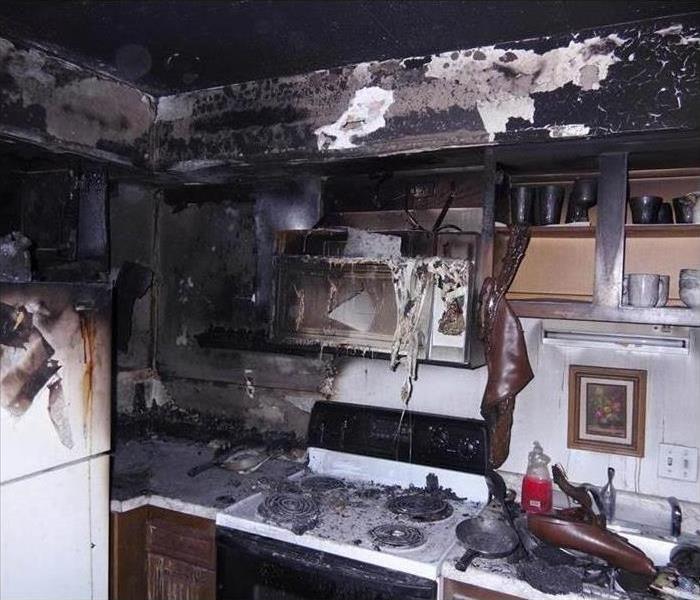 Fire cleanup in a Roaring Spring, PA kitchen.
Fire cleanup in a Roaring Spring, PA kitchen.
Home Safety Tips for Using Candles
Each year, thousands of fires occur due to the careless use of candles, causing costly damage and injury. If your Roaring Spring, PA, home is damaged by a candle fire, you could end up spending thousands of dollars for fire restoration and smoke cleanup. You can make sure this doesn't happen by following the handy tips outlined below.
1. Place Candles Securely
Place the candle on a surface where there's no clutter. The surface should be sturdy enough that the candle won't tip over. The candle should have at least 12 inches of space around it and kept away from any possibly flammable items. Holders should be inspected to make sure the base is stable and that it is the correct size for the candle.
2. Always Be Watchful
One of the best ways to prevent a candle fire is to never leave the room where a candle is burning without coming back periodically to check on it. Also, keep an eye on the airflow around the burning candle. If the flame is continually shifting back and forth, move the container to an area where the air isn't moving.
3. Keep Candles Out of Reach
Always keep candles well away from children or pets. If possible, put them up on a high table or shelf to make sure they can't be easily knocked over by little hands or paws. When storing candles and matches, it's advisable to keep them in a childproof cabinet or drawer.
4. Practice Safety Precautions
Pull your hair out of the way when lighting a candle and be aware of any loose clothing you have on. Never burn a candle to lower than about an inch; otherwise, extinguish it and throw it out. Don't burn candles in your bedroom: it's very easy to fall asleep, greatly increasing your risk of fire. If someone in your home is using an oxygen tank, don't burn candles at all.
Nobody wants to face the results of a candle fire in their home. Happily, by using the common-sense tips outlined above, you can easily keep this from happening.
Effective Cleanup Ideas After a Fire
2/4/2022 (Permalink)
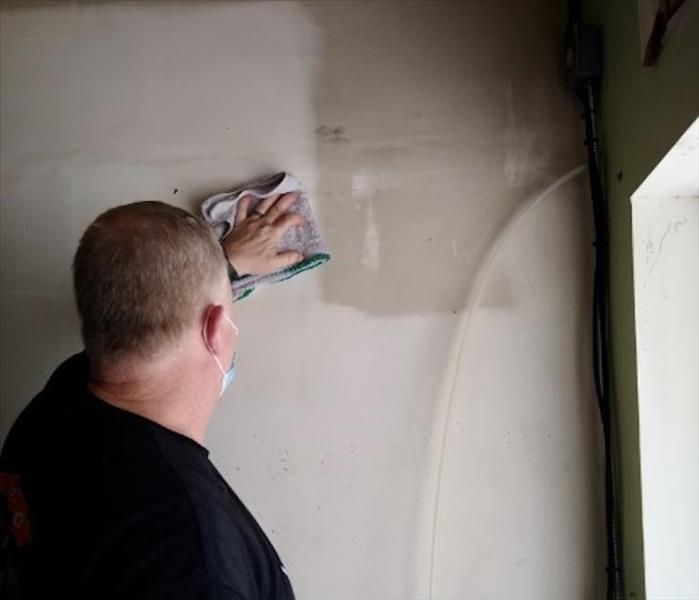 This home suffered a fire that left soot all over the walls even in rooms not directly affected by the fire. SERVPRO remediates the entire problem!
This home suffered a fire that left soot all over the walls even in rooms not directly affected by the fire. SERVPRO remediates the entire problem!
Any homeowner would shudder at the thought of a fire starting in his or her home. This is a nightmare scenario that could cause extensive damage, not to mention costly repair, cleaning and recovery. In large fires, if you didn’t have effective content storage to keep out the flames and smoke, you’ll likely have to deal with ruined clothing, furniture, appliances, electronics and a host of other things. Fortunately, dry-cleaning services in Blair or Bedford County, PA can often help restore your items. There are also other content cleaning methods to get your items back to a usable state.
1. Professional carpet cleaning can help salvage your flooring.
Your carpets can bear a huge brunt of a house fire. It’s not just the flames that can destroy flooring; smoke and water damage can also make carpets unsalvageable. However, there are experienced, reputable carpet-cleaning companies that have the tools and skills to remove the odors and even restore your carpets. Make sure you include carpet and floor cleaning in your content cleaning efforts following a fire.
2. Dry-cleaning can save your clothes.
Smoke damage can wreak havoc with your wardrobe, but all hope is not lost. Choosing a top dry-cleaner will help ensure that awful smoke smell is gone from your clothes. A regular cycle in the washer won’t do. Make sure you take a trip to the cleaners.
3. Professional ultrasonic care can help with non-porous items.
For those items damaged that weren’t protected in content storage, professional cleanup and restoration companies are your best source. They can handle all your cleanup needs. The pros will use ultrasonic tools and methods to tackle even the most challenging items. They can even clean smoke-damaged materials and items.
Turn to the professionals to help with your dry-cleaning and content cleaning after a fire. They can help restore all the items not protected by content storage.
How To Use a Fire Extinguisher
1/29/2022 (Permalink)
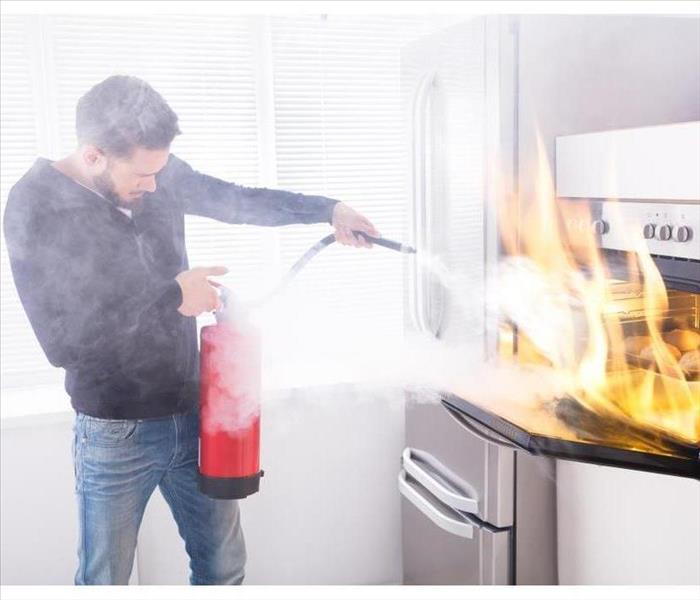 A fire extinguisher is a common tool to help put out fires.
A fire extinguisher is a common tool to help put out fires.
Knowing How To Use a Fire Extinguisher
You see them in office buildings, restaurants, schools, stores and just about every type of building you visit in Breezewood, PA. You may even have one in your workplace. A fire extinguisher is a common tool to help put out fires. They’re handy for the common person to use before the fire gets too large and out of control. If you know how to use an extinguisher, you can act when needed and help avoid major fire damage in a kitchen fire or other similar incidents. If you’ve never been trained to operate this important device, know is the time to learn. If you can remember PASS, knowing how to use a fire extinguisher is easy.
1. Pull. The first thing you want to do when operating a fire extinguisher to put out a fire is stand at the appropriate distance. Most extinguishers have a range of 6 to 20 feet, so make sure you know how far the one you have will reach. Next, you pull the pin in the extinguisher. Once you do this, you can move to the next step.
2. Aim the nozzle at the base of the fire. Some people think the best way to attack a kitchen fire or fire somewhere else in your home or building is to spray at the top of the flames. This won’t be effective, however. You must go for the base if you hope to smother it.
3. Squeeze the trigger. To avoid major fire damage in your house or whatever building you’re located in Breezewood, PA, you need to act quickly. In step three, simply squeeze the trigger firmly. This will release the agent inside the extinguisher and help put out the fire.
4. Go in a sweeping motion. Don’t move the device up and down. Instead, go from side to side until you have successfully put out the fire.
When you know how to use a fire extinguisher to put out a kitchen fire or other type, you can avoid major fire damage. You’ll also have the confidence to act without delay.



 24/7 Emergency Service
24/7 Emergency Service









